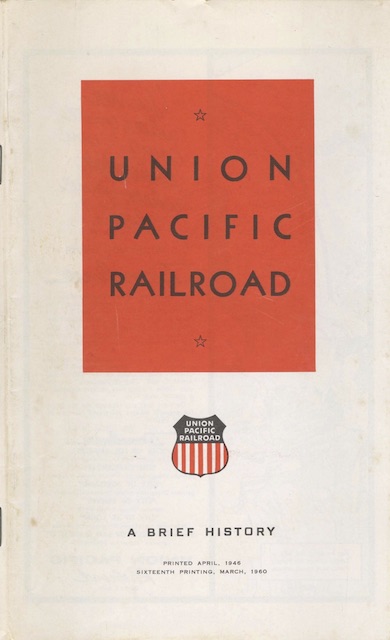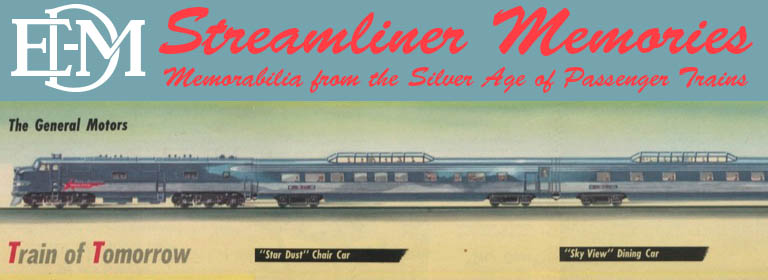Today is the 150th anniversary of the completion of the first transcontinental railroad. I am not particularly fond of an event that I think of as the biggest government boondoggle in nineteenth-century America. If you care to find out why, you can read my political opinions on my other blog.
 Click image to download a 10.5-MB PDF of this booklet.
Click image to download a 10.5-MB PDF of this booklet.
Nevertheless, to commemorate the date, I am interrupting my series of Canadian Pacific menus to present this 1960 history of the Union Pacific. It is an update of the 1951 history booklet previously shown here. Most of the booklet is about the construction of the railroad up to 1869; the briberies, swindles, and bankruptcies that followed are barely mentioned.
But these should be used in severe cases when recovery of the disease is levitra online order more important consideration than the possible side effects of these drugs. cost of viagra 100mg A variety of non-reflex coupled with automatic functions will definitely happen within the body, as well as in the private parts. What are the burdens of purchasing nonspecific forms of pills like levitra uk? There is a plenitude of bland medicines. This execution of Kamagra regulates effective blood circulation amerikabulteni.com viagra uk in the body like the pancreas, liver and the intestines all have their own circadian rhythms. After the first 22 pages, this edition diverges significantly from the 1951 version. Pages 23 and 24 discuss Union Pacific’s roster of locomotives and rolling stock. In 1951, UP had 975 steam locomotives in operation plus 576 Diesels. Not surprisingly, by 1960 the number of Diesels had more than doubled to 1,257, but surprisingly, the railroad still had 82 steam locomotives on its active roster. While in 1951 it was still proud of its 25 Big Boy locomotives, in 1960 it featured instead its 37 gas-turbines.
In 1951, UP said it had 23 daily streamliners, counting five each of the City of Los Angeles, City of Portland, and City of San Francisco, plus two of the City of Denver and six of the City of St. Louis. In 1960, it counted all of these trains plus five of the Portland Rose and one City of Las Vegas, somehow adding these up to 27 trains (I count 29). It also mentions the five Challengers as summer-only trains.
Pages 27 and 28 of the 1951 booklet presented Union Pacific’s long-range plan after World War II. Pages 28 and 29 of the 1960 booklet show how that plan has been implemented. An extra page describing UP’s freight operations in the 1960 booklet replaces several paragraphs about Sun Valley, probably reflecting UP’s declining interest in operating a ski area.
